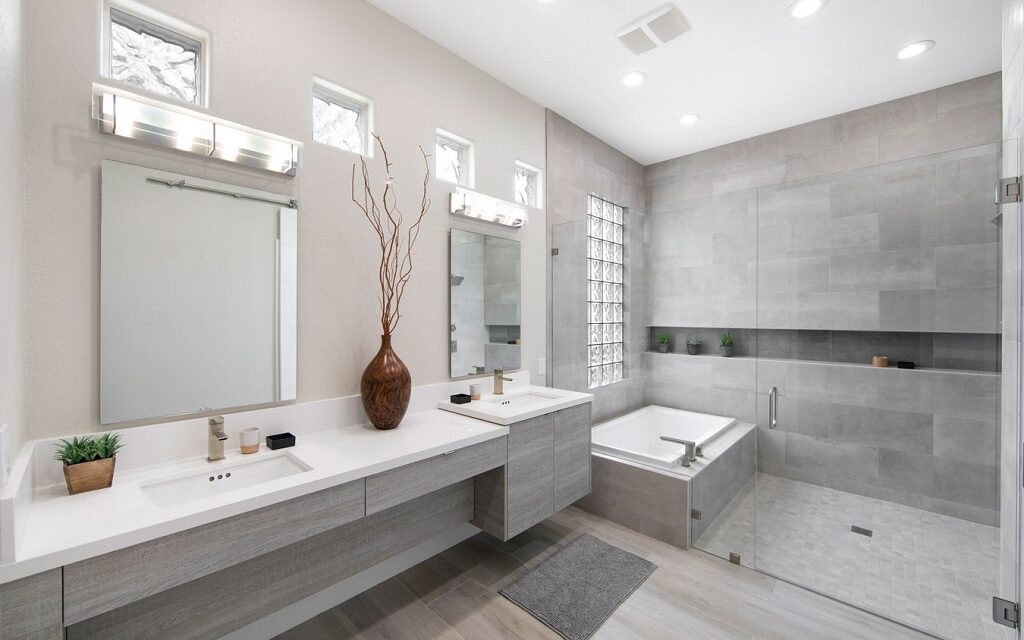The main photo is courtesy of ONE eleven ltd. which features a luxury bathroom they remodeled using the principles of Universal Design.
The preference to remain in one’s home well into an advanced stage of life (AKA Aging in Place) continues to grow in popularity with senior homeowners.
To age in place safely and constructively, however, homeowners must plan to adapt their homes to anticipate changes in their cognitive and physical capabilities. These modifications will need to mesh well with their fluctuating physical, mental and emotional needs, with the goal of making their homes safer, more comfortable and enjoyable.
Given the impossibility of knowing exactly what an aging person will need several years into the future, planning for flexibility, while preserving the value of your home, is critical to navigating the evolution of your home effectively.
In this article, we cover several important topics, including Universal Design and Assistive Technologies that can provide homeowners valuable options to foster an aging in place household over time.
Table of Contents
- The Benefits of Aging In Place
- Aging In Place’s Impact on Home Value
- Aging In Place Modifications that Boost Home Value
- Aging In Place Modifications that Lower Home Value
- Aging in Place Considerations for a Multigenerational Home
- Home Inspections for Seniors & Aging In Place Households
Also see:
- 13 Innovative Examples of Assistive Technology for the Home
- Need an Aging In Place Specialist? Look for These Certifications!
- Aging In Place Technologies for Today and the Future
- More Recommended Aging in Place Articles
- Related Topics: Aging In Place | Home Wellness | ADUs | Renovations| Multigenerational Living
The Benefits of Aging In Place
Elders generally favor living in their own homes and community, comfortably and safely, regardless of their age or physical ability, as there are many benefits to Aging in Place (AIP), including:
- Familiarity: Individuals are already familiar with their home and community, which means they don’t have to get accustomed to new faces and places after a move
- Independence: Individuals maintain feelings of independence and control over their daily activities and routines.
- Cost-Effectiveness: The expense of long-term care and moving to a retirement or nursing home can be significant. Staying at home with limited support can often be a more efficient option in retirement.
- Stronger Social Support: Aging in place can provide emotional benefits, including a sense of belonging, attachment to a community, and opportunities for social interaction.
- Improved Wellness: It is known that aging in place reduces the risk of depression, social isolation, and cognitive decline.

Aging In Place’s Impact on Home Value
Whether aging in place modifications affect home value positively or negatively will depend on the specific modifications made and the preferences of potential buyers.
As a general rule of thumb, home modifications should be aesthetically pleasing and serve multiple generations. Continued appreciation in one’s home will provide a valuable financial safety net to help homeowners navigate unexpected needs in the future.
It’s also important to remember that some modifications may be more costly than others and may not provide a significant return on investment when selling the home. Hence, always research and weigh each modification’s costs and benefits before making any changes to the house. In certain cases, keep in mind that you may be eligible for certain home repair grants that can help cover modification costs.
When considering aging in place home modifications, also keep in mind Assistive Technology, as both complementary and alternative solutions. This category of products helps persons of all ages, with far ranging physical and cognitive limitations and challenges, tackle their daily lives with as much independence and convenience as possible. These products are also great options when encountering temporary setbacks.
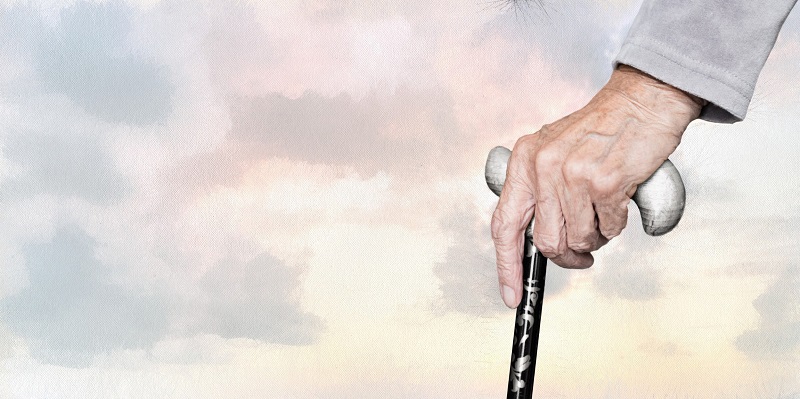
Also see:
Aging In Place Modifications that Boost Home Value
Modifications that enhance accessibility and safety can increase a home’s value, making the property more appealing to aging adults and persons with disabilities. For example, installing grab bars, walk-in showers, and stair lifts can make a home more accessible and safer, which can be attractive to certain types of buyers.
Helpful guidance to heed when considering aging in place modifications is to learn about the benefits and approaches of Universal Design, as there are many overlaps with this utilitarian design approach and aging in place. The name is derived from attempting to make living spaces as convenient, safe, adaptable and enjoyable for as wide a range of residents as possible.
The most important trait of Universal design is that it is a human-centered design, aimed at accommodating people of all sizes, ages, and abilities.
Here are several aging in place modifications that will typically add value to your home:
- Adding a Full Bathroom on the Main Level
- Widening Doorways and Hallways
- Installing Non-Slip Flooring
- Creating Entrances without Stairs or Steps
- Replacing Door Knobs with Lever Handles
- Installing Hands-Free Faucets in the Kitchen and Bathrooms
- Upgrading to Pull Out Drawers
- Leveraging Smart Technology
Adding a Full Bathroom on the Main Level
Many seniors may have difficulty climbing stairs, so having a full bathroom on the main level can increase accessibility and reduce the risk of falls. The addition of a full bathroom improves the functionality and convenience of the home, making it easier for residents to live independently. It also reduces the risk of falls, especially on the stairs.
Having a full bathroom on the main floor is also an attractive feature for households who regularly host elderly guests, such as grandparents, or when needing to convalesce injured or ailing family members.
Widening Doorways and Hallways
Mobility issues can arise over time, making it difficult to navigate through narrow doorways and hallways with mobility aids such as walkers and wheelchairs. By widening doorways, seniors can move through the home more easily. The doorway should be at least three feet wide, while hallways should be at least four feet to fit mobility devices. This modification can also create a more open and spacious feel to the home.
Wider doorways and hallways also provide and additional benefit of making a home easier to maintain, use, adapt and redecorate (e.g. add new furniture, or rearrange existing furniture).
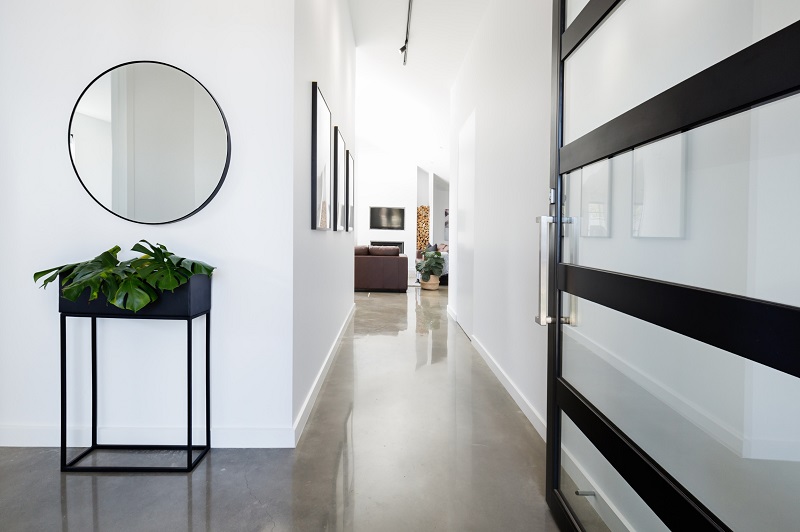
Installing Non-Slip Flooring
Non-slip flooring improves safety and reduces the risk of falls. As people age, they are more susceptible to changes in balance, vision, and mobility, which makes it important to have a safe and slip-resistant flooring surface.
Non-slip flooring material come in rubber, cork, and slip-resistant tiles that provide more traction and stability, traits helpful for reducing slips, trips, and falls. Non-slip flooring also come in a wide-range of styles and colors to complement any home décor.
Creating Entrances without Stairs or Steps
Creating entrances without stairs or steps allows seniors to access their homes safely and comfortably with lower risk of losing balance. Adapting entrances and exits for aging in place requires careful planning and are critical for increasing confidence and supporting long-term mobility needs.
A popular feature of multigenerational households is a separate, ground-level entrance for elderly family members to enter their private living quarters safely and easily. Universal Design best practices applied to homes state that every residence should have at least one no-step entryway (AKA zero-step entrance).
Replacing Door Knobs with Lever Handles
As people age, grip strength and dexterity can decrease, making it difficult to turn doorknobs. Lever handles require less grip strength and can be operated with a simple push or pull motion, making them a more accessible option.
This practical modification can also improve safety, as lever handles can be opened with an elbow or forearm in an emergency, reducing the risk of falls or injuries. This is a simple modification that homeowners or professional installers can do.
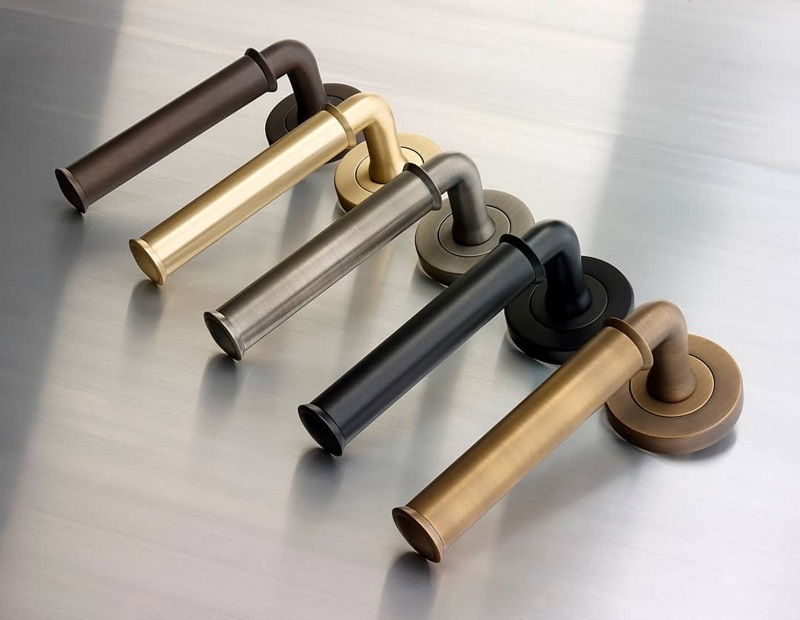
Installing Hands-Free Faucets in the Kitchen and Bathrooms
Besides convenience and accessibility, installing hands-free faucets in the kitchen and bathrooms also improves hygiene, eliminating the need to touch faucet handles that may harbor germs or bacteria.
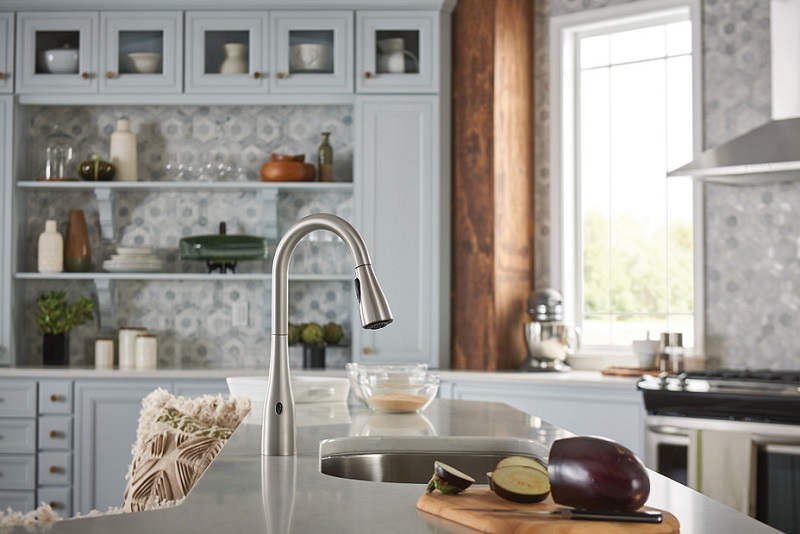
Image courtesy of Moen
Hands-free faucets operate with motion sensors or touchless technology, allowing seniors to turn them on and off the water with ease. Moreover, hands-free faucets can conserve water and reduce utility bills by automatically shutting off when not in use.
Keep in mind that many smart faucets operate via batteries, so hands-free faucets will still work during power outages. Motion sensor faucets that use lithium batteries can run 3 to 5 years until needing replacements, while faucets that require AA batteries typically need to be replaced once a year.
Upgrading to Pull Out Drawers
Reaching deep into cabinets can become difficult or uncomfortable over time, making it challenging to access items stored in the back. Pull out drawers allow seniors to access stored items easily by providing full extension and visibility of the entire drawer.
Purchase a pull out drawer kit that matches the existing cabinet décor that is designed for easy use. These drawers can also increase storage capacity and organization, providing a more functional and efficient space.
Leveraging Smart Technology
Adapting your home with smart technology is an excellent way to automate tasks and make life more convenient. Some examples of what smart technology can do around the house include:
- Control of Lighting: Smart lighting systems allow you to control the lighting in your home using a mobile app or voice commands. You can turn lights on and off, dim them, and even change their color, without the need to get up.
- Temperature Control: Smart thermostats can learn your preferences and adjust the temperature in your home accordingly.
- Home Security: Smart security systems can monitor your home for suspicious activity, alert you to potential dangers, and even allow you to view live feeds from cameras installed in and around your home.
- Cleaning Appliances: Smart vacuums can navigate around your home and clean your floors automatically, while smart washing machines and dryers can be controlled remotely and can even send you notifications when a cycle is complete.
- Kitchen Appliances: Smart refrigerators can help you keep track of your groceries, and smart ovens can be controlled remotely, allowing you to preheat your oven before you arrive home.

With any smart technology used for the home, be sure to review and understand how to access any applicable manual overrides where applicable.
Aging In Place Modifications that Lower Home Value
Some modifications may not be as attractive to potential buyers and may even decrease the home’s value. For example, if a bedroom is converted into a bathroom to accommodate an aging homeowner, this could negatively affect the home’s value if future buyers prefer more bedrooms.
- Adding Chair Lifts to Stairs
- Installing Permanent Exterior or Wheelchair Ramps
- Adding Large Grab Bars and Push Bars on Doors
- Installing an Elevator
- Installing Walk-in Bathtubs
Adding Chair Lifts to Stairs
While stair glides can help aging adults, they can also pose a danger as homeowners must place themselves on and off the chair. When this is done at the top of the stair, you are more prone to accidents. Stair lifts can also impact the aesthetic of the home in some cases.
An alternative stairs solution to consider is the Walker AssiStep, which is affordable and provides the safe ability to continue physical activity from using stairs. The product is also straightforward to install and remove.
Installing Permanent Exterior or Wheelchair Ramps
Permanent ramps can require significant modifications to the home’s exterior, which can be expensive and time-consuming to remove if the new homeowner does not want them. This can potentially reduce the pool of potential buyers for the home, impacting its resale value.
Portable or modular ramps are a good alternative. Portable ramps are lightweight and can be easily moved around or stored when not in use, which can help maintain the home’s curb appeal.
Modular ramps are made up of prefabricated sections that can be assembled and disassembled as needed. Both types of ramps can be easily adjusted to fit a variety of entrance configurations and can be a cost-effective alternative to permanent ramps.
Adding Large Grab Bars and Push Bars on Doors
These modifications may require significant modifications to your home’s doors and walls, which can be expensive to remove if a potential new homeowner does not require them. Replacing door knobs with lever handles is a less invasive modification that will help the home’s value.
Installing an Elevator
Installing an elevator in a home is a costly modification that may not be suitable for all potential buyers. Elevators require significant structural modifications to the home, including adding a shaft, electrical wiring, and mechanical components, which can be expensive.
Additionally, elevators can take up significant space in the home, which can impact the layout and flow of the house. Elevators may require ongoing maintenance and repairs, which can be an additional expense for homeowners.
As an alternative, consider a stair lift or redesigning the home’s layout to accommodate a first-floor bedroom or modifying existing bathrooms to make them more accessible. Ultimately, the best solution will depend on the specific needs of the individual and the home’s layout and design.
Installing Walk-In Bathtubs
Walk-in bathtub installations are often viewed as a specialized feature that may not be useful to all potential buyers. While walk-in tubs can be helpful for individuals with mobility limitations, they can be seen as an unnecessary expense. Walk-in tubs can also take up significant space in the bathroom. As with installing an elevator, installing a walk-in tub may require significant modifications to the bathroom.
Instead, consider a curbless or low-threshold shower. These showers are designed with a minimal or no curb at the entry point, making them easier to enter and exit than traditional showers. They can be customized with various safety features, including built-in grab bars, non-slip flooring, and hand-held showerheads.
Curbless or low-threshold showers can be more cost-effective and practical than walk-in tubs, as they do not require the same level of installation or plumbing modifications.
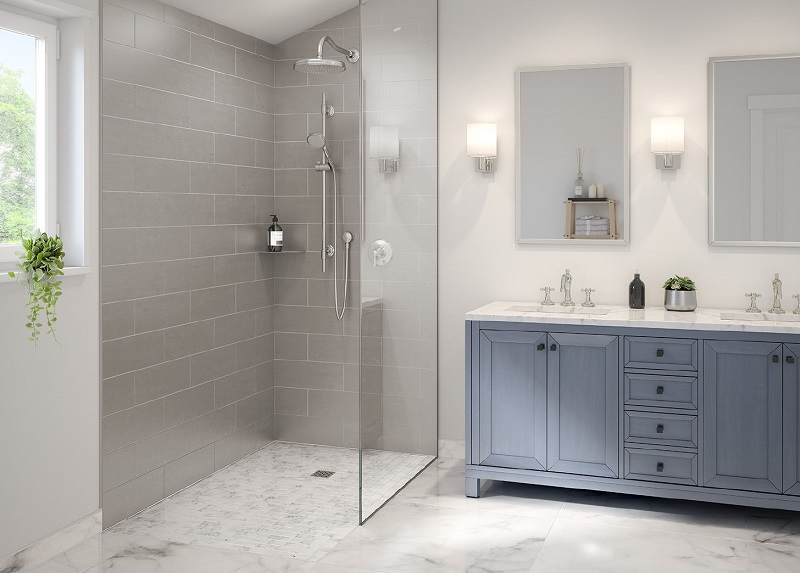
Image of a curbless shower courtesy of Schluter Systems.
Ultimately, the impact on home value will depend on various factors, including the location, the overall condition of the home, and the preferences of potential buyers.
Aging In Place Considerations for a Multigenerational Home
In this living arrangement, multiple generations of a family live under one roof. The main goal of a multigenerational home is to provide a living space that allows for increased family interaction and support, as well as more affordable living arrangements for family members who may need assistance or care.

Aging in place in a multigenerational living situation support the needs of every generation of a family. For older adults, it can provide a moderate level of support and increase social interaction, both of which are critical to overall wellness.
Adult children get the benefit of help and social support as they manage a busy household with many responsibilities. Children in multigenerational households get more quality time with their relatives and often have more adult supervision and presence after school and on weekends.
The modifications to age in place also provide a safe and more enjoyable atmosphere for children to spend more time with their grandparents, for example, with less reliance on their parents or other adults being present.
Benefits of a Multigenerational Home
Due to the many benefits, multigenerational homes are increasing in popularity – according to a survey by NAHB, 39% of homebuyers prefer a multigenerational home.
- Financial Efficiency: It’s a more affordable and sustainable living arrangement as family members can share expenses and responsibilities, such as the mortgage and insurance.
- Enhanced Caregiving: In a multigenerational home, family members can take turns caring for family members, allowing for a more balanced, sustainable and trustworthy caregiving arrangement.
- Increased Family Support: Living with multiple generations of family members can provide a strong support network, allowing family members to rely on one another for emotional and physical support. A good example is grandparents taking care of their grandchildren while the parents are working.
- Intergenerational Learning: Children can learn valuable life skills from their grandparents, such as cooking, gardening, or woodworking, while grandparents can learn new technology or other skills from younger family members.
- Reduced Loneliness and Isolation: Multigenerational living can help reduce loneliness and isolation, particularly for older family members.
Also see:
Home Inspections for Seniors & Aging In Place Households
A home inspection is an important step before commencing any renovations meant to support aging in place. It’s also an opportunity to ensure that planned modifications will work with the existing structures and systems of your house. An aging in place home inspector may also help uncover hazards that impact older adults, like water damage that could lead to tripping hazards.
Aging In Place Inspections vs. Regular Home Inspections
Aging in place inspections are different from regular home inspections in that they focus specifically on assessing the home’s safety and accessibility for seniors. Regular home inspections, on the other hand, are typically conducted when a home is being bought or sold, and are intended to identify any major structural or mechanical issues with the home.
During an aging in place inspection, a trained professional will assess the home’s layout, accessibility, and safety features, such as doorways, stairs, lighting, and flooring. They may also evaluate the home’s heating, cooling, and ventilation systems, as well as any potential hazards, such as loose rugs or cluttered areas. All with the goal of identifying potential barriers or hazards for seniors.
Regular home inspections, on the other hand, are focused on identifying any major defects or safety hazards in the home that could affect its value or pose a risk to the occupants. These inspections are typically conducted by a certified home inspector and cover the home’s structure, roof, foundation, electrical and plumbing systems, and other major components.
Home Safety Checklist for Seniors
Here’s a basic home inspection safety checklist for the elderly:
- Lighting: Ensure that all home areas are well-lit, especially stairways and entryways.
- Floors: Ensure that floors are non-slip and in good condition, with no loose rugs or tripping hazards.
- Stairs: Ensure stairs are sturdy, with secure handrails on both sides.
- Entrances and Exits: Ensure that doorways are wide enough to accommodate walkers or wheelchairs if needed.
- Bathroom Safety: Ensure bathrooms have grab bars and non-slip surfaces in the shower or bathtub.
- Kitchen Safety: Ensure that kitchen appliances are within easy reach and that there is adequate lighting and ventilation.
- Fire Safety: Ensure that smoke detectors are installed and in working order and that there is a fire extinguisher in the kitchen.
- Outdoor Safety: Ensure outdoor areas are well-lit and have no tripping hazards.
- Electrical Safety: Ensure that electrical outlets and switches are easily accessible and in good working order.
- Emergency Preparedness: Ensure emergency phone numbers and a first aid kit are readily available.
Remember, this is just a basic checklist, and there may be other safety concerns that are specific to your home or situation. A professional aging in place inspection can provide a more thorough evaluation and make specific recommendations for modifications to improve safety and accessibility.
Home modifications to age in place can significantly improve the safety, accessibility, and overall quality of life for seniors. By making changes such as adding a full bathroom on the main level, widening doorways, installing non-slip flooring, and creating entrances without stairs or steps, seniors can continue to live independently and safely in their homes. While some modifications may come with a cost, they can also increase the value of the home in the long term.
More Recommended Aging In Place Reading
- 4 Popular Reasons to Add an ADU to Your Property
- Why Homeowners Should Invest in a Prefab ADU
- Add Calm to Your Life with a Peaceful Sensory Garden
- How to Design a Low-Maintenance Garden
- How to Create an Allergy-Free Environment in Your Home
- UV-C Products to Make Your Home Healthier & Virus Free
- Does an ADU Add Value to Your Home? Surprising Trends from HomeLight
| Purgula is reader-supported. When you click on links to other sites from our website, we may earn affiliate commissions, at no cost to you. If you find our content to be helpful, this is an easy way for you to support our mission. Thanks! Learn more. |

